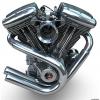This is big news!
Dr. Brenner was asked specifically about these ischemia experiments on heart and brain tissue. This study above didn't touch on the underlying reason researchers are looking at the nicotinamide riboside angle but there seems to be great interest in why NRK2 is expressed in these injured tissues.
The nicotinamide riboside kinase (Nrk) pathway, which is induced in response to damage converts nicotinamide riboside to nicotinamide adenine dinucleotide (NAD+) by phosphorylation and adenylylation. (NR to MNM to NAD)
I think we've covered the gene expression tissue mapping project in previous posts. Its a resource where if you have an enzyme to research you can type it in see what gene is creating it and see which tissues have this gene expressed or not. I shared with him the study in the previous link and there's a lot of researchers asking this question. Why would nicotinamide riboside kinase 2 be more highly expressed at times of stress in these tissues? He says he getting emails all the time asking these very same questions.
Many of you will ask what was his answer. It boils down to we need more research. He said we could anthropomorphize the situation and say the cell wants NR but we can't make that association because the Cell is more like a machine and not like us. He did comment on how NR takes the least amount of cell resources to turn into NAD and this might be at the core of this question.
So if your just browsing this topic and want to know what the experimenters did is they cut off the blood supply to the heart tissue producing hypoxia/reoxygenation (H/R) injury in mice. This would be like you or I having a heart attack, blood clot or inclusion in a cardiac blood vessel. However unlike humans they can divide the mice into groups with some getting nicotinamide riboside supplementation and others without.
http://content.onlin...ticleid=2556383
Conclusions
Objectives | Methods | Results | Conclusions
These results for the first time demonstrated that NR could alleviate the myocardial ischemia/reperfusion injury. The underlying mechanism was improving the mitochondrial biogenesis via Sirt3-PGC-1α pathway and reducing the accumulation of excessive autophagosome via Sirt3-P53 pathway. This study provided important evidence for the potential clinical practice of NR in myocardial protection.
http://grantome.com/...R21-HL126209-01
Abstract
"Medical care of heart failure (HF) has been stagnant for the past 20 years; innovative therapy is urgently needed. A novel therapeutic target, mitochondrial dysfunction, has been implicated in multiple diseases, including heart failure. However, there currently is no specific treatment for mitochondrial dysfunction in human heart failure or any other disease. Mitochondria-based therapy development has been hampered both by limited understanding of how mitochondrial impairment causes cardiac dysfunction, and by a lack of interventions shown to improve mitochondrial function. Recently, we demonstrated in a murine model, that impaired mitochondrial oxidative phosphorylation led to an increased myocardial NADH/NAD+ ratio and increased mitochondrial protein acetylation, without affecting mitochondrial ROS production or ATP synthesis. These changes rendered the heart susceptible to chronic stresses, which accelerated the development of heart failure. We observed a similar increase of NADH/NAD+ ratio and increase in protein acetylation in animal models of heart failure due to chronic pressure overload with no prior mitochondrial dysfunction. Supplying the NAD+ precursor, nicotinamide mononucleotide (NMN), to these mice normalized the NADH/NAD+ ratio, prevented increased mitochondrial protein acetylation and improved cardiac function. Though NMN is not orally bioavailable, we and others have shown that oral supplementation with nicotinamide riboside (NR), the precursor from which NMN is produced, also decreases (normalizes) tissue NADH/NAD+ ratio and improves mitochondrial function in mouse models. These animal model results suggest a conceptually innovative mechanism linking mitochondrial dysfunction to the development and progression of heart failure that is distinct from the existing hypotheses of oxidative stress and energy starvation. Thus, we hypothesize that oral supplementation with NR will improve the NADH/NAD+ ratio caused by mitochondrial dysfunction during chronic stresses, and improve functional capacity and ventricular function in systolic heart failure. We therefore propose a first-in-human, safety and tolerability trial of the nutritional supplement, nicotinamide riboside (NR) in 30 participants wit clinically-stable, systolic heart failure. NR is a relative of niacin, but a closer relative of nicotinamide which, unlike niacin, does not induce flushing or pruritis and has no effect on lipid levels. NR does not induce insulin resistance or dysglycemia in mouse models. Thus, NR would potentially be cheap, safe, well-tolerated and readily available. The application is in response tothe program announcement of Nutrition and Diet in the Causation, Prevention, and Management of Heart Failure as NR has recently been approved for human use as a health supplement. As NR has not been used therapeutically in heart failure patients, we will utilize the R21 mechanism to support a pilot study with the following aims: 1) to determine the safety and tolerability of NR in patients with clinically-stable, systolic heart failure (LVEF <40%); 2) to determine whether, at the doses employed, NR has measureable effects on leukocyte NAD+ level and NADH/NAD+ ratio; and 3) to explore the potential range of effects of NR supplementation on heart failure surrogate endpoints."
Edited by midas, 17 October 2016 - 12:01 AM.
































 This topic is locked
This topic is locked























